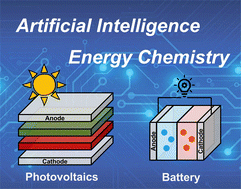Machine learning in energy chemistry: introduction, challenges and perspectives
Abstract
With the development of industrialization, energy has been a critical topic for scientists and engineers over centuries. However, due to the complexity of energy chemistry in various areas, such as materials design and fabrication of devices, it is hard to obtain rules beyond empirical ones. To address this issue, machine learning has been introduced to refine the experimental and simulation data and to form more quantitative relationships. In this review, we introduce several typical scenarios of applying machine learning to energy chemistry, including organic photovoltaics (OPVs), perovskites, catalytic reactions and batteries. In each section, we discuss the most recent and state-of-art progress in descriptors and algorithms, and how these tools assist and benefit the design of materials and devices. Additionally, we provide a perspective on the future direction of research in this field, highlighting the potential of machine learning to accelerate the development of sustainable energy sources. Overall, this review article aims to provide an understanding of the current state of machine learning in energy chemistry and its potential to contribute to the development of clean and sustainable energy sources.

- This article is part of the themed collections: Energy Advances Recent Review Articles, Energy Advances: Highlight USA & Canada, Machine Learning and Artificial Intelligence: A cross-journal collection, Artificial Intelligence & Machine Learning in Energy Storage & Conversion and Energy Advances – 2023 Outstanding Papers


 Please wait while we load your content...
Please wait while we load your content...